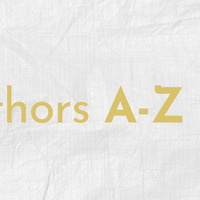-
 Banner
Banner
-
Gnoli, Teresa
-
Peasantry/Lower
Education was scarce for women in this class, and few had the opportunity to become writers. Their voices were often documented by others.
-
Working Class
Women in this class had limited educational opportunities but some self-taught writers managed to emerge, often writing about social issues.
-
Middle Class
Middle-class women had increasing access to formal education and literary circles. Many notable women writers emerged from this class.
-
Aristocracy/Upper
Women from aristocratic families often received private education, including literature and languages. Many became patrons of the arts or writers themselves.
-
Jewish
Jewish women in North America, often immigrants, wrote extensively about cultural assimilation, family, and faith, with notable authors like Emma Lazarus advocating for Jewish causes.
-
Jewish (Minority)
The Jewish population in Ireland was small, but women writers contributed to discussions on diaspora, identity, and religion, though fewer examples exist.
-
Jewish
British Jewish women gained greater integration during this period. Writers such as Amy Levy addressed themes of gender, faith, and modernity.
-
Jewish
Jewish women in Italy often faced legal and social restrictions but were central to their communities. Writers like Grazia Deledda explored themes of cultural identity and assimilation.
-
Quaker
Quaker women emphasized equality and education. Many became prominent abolitionists, suffragists, and reformers, with their writings advocating for pacifism, gender equality, and social justice.
-
Quaker
Quaker women, with a strong emphasis on equality, played significant roles in abolitionist and suffrage movements, producing influential writers.
-
Protestant (Puritan, Methodist, Presbyterian, Baptist, Congregationalist)
Protestantism in North America encouraged literacy, particularly through Bible study. Women writers like Harriet Beecher Stowe and Emily Dickinson emerged, engaging with religious themes and advocating for social reform, including abolition and women’s rights.
-
Protestant (Minority, Waldensians)
Protestantism was a minority religion in Italy, mainly associated with the Waldensian Church. Protestant women writers often faced social marginalization but were active in advocating reform and addressing religious tolerance.
-
Protestant (Anglican, Presbyterian, Methodist)
Protestant women, particularly Anglo-Irish, were often part of the educated elite. Their works engaged with themes of colonialism, identity, and religion, reflecting their privileged yet conflicted positions.
-
Nonconformist (Methodist, Baptist, Congregationalist, etc.)
Nonconformist women were often highly educated within their religious communities. Writers addressed issues like abolition, suffrage, and social justice, emphasizing equality and moral responsibility.
-
Catholic
Catholic women in North America, often immigrants, faced limited opportunities but produced works reflecting faith and cultural challenges.
-
Catholic
The Catholic Church strongly influenced education for women, with convents providing limited access to literacy and writing skills. Writers often explored themes of faith and morality.
-
Catholic
Catholicism was central to Irish women's identity. Education was limited for many, but some women writers used their work to highlight national and religious struggles.
-
Anglican (Church of England)
Anglicanism dominated among British women, shaping their moral and social roles. Many writers were influenced by religious themes or critiqued religious structures.
-
Francesca Sartori
-
Matilde Impavido
-
Samuel Tabbo
-
Alison Isherwood
-
Sofia Renwick
 Banner
Banner